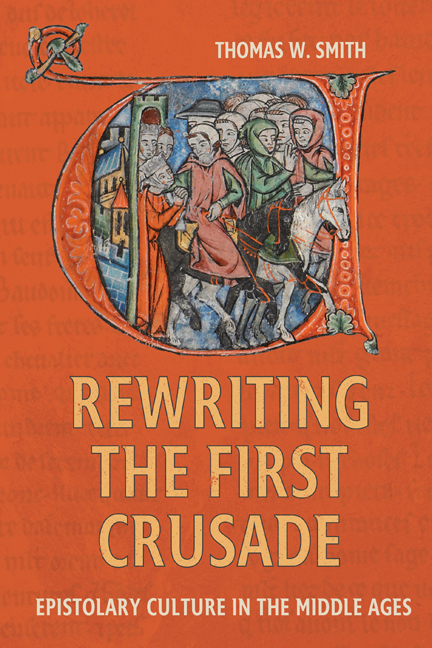Book contents
- Frontmatter
- Dedication
- Contents
- List of Illustrations
- Acknowledgements
- List of Abbreviations
- Introduction
- 1 The Call from the East: The Letters of Alexios I
- 2 The Launch of the Crusade: The Letters of Urban II, 1095–96
- 3 Letters from the Crusader Host, 1097–98
- 4 Letters from the Leaders of the Crusade, 1097–98
- 5 Interpreting the News from the East, 1099–1100
- 6 First Crusade Letters and Medieval Manuscript Cultures
- Conclusion
- Appendix: New Manuscripts of First Crusade Letters
- Bibliography
- Manuscript Index
- General Index
- Crusading in Context
4 - Letters from the Leaders of the Crusade, 1097–98
Published online by Cambridge University Press: 09 May 2024
- Frontmatter
- Dedication
- Contents
- List of Illustrations
- Acknowledgements
- List of Abbreviations
- Introduction
- 1 The Call from the East: The Letters of Alexios I
- 2 The Launch of the Crusade: The Letters of Urban II, 1095–96
- 3 Letters from the Crusader Host, 1097–98
- 4 Letters from the Leaders of the Crusade, 1097–98
- 5 Interpreting the News from the East, 1099–1100
- 6 First Crusade Letters and Medieval Manuscript Cultures
- Conclusion
- Appendix: New Manuscripts of First Crusade Letters
- Bibliography
- Manuscript Index
- General Index
- Crusading in Context
Summary
The impulse to send epistles from the First Crusade back to the West was not exclusive to individuals. There are four extant letters issued in the name of the collective leadership of the crusade: the letter of Symeon, patriarch of Jerusalem, and Adhemar, papal legate and bishop of Le Puy, to the people of the ‘north’, purportedly from October 1097; the letter of Symeon and the other bishops with the army, addressed to the people of the West, supposedly from January 1098; the letter of Bohemond, Raymond of Toulouse, Godfrey of Bouillon and Hugh of Vermandois to all the Christian faithful, apparently written at some point between April and July 1098; and the letter of the crusade leaders to Pope Urban II, from 11 September 1098 (there is also the Laodicea letter, sent after the conclusion of the crusade, which is dealt with in Chapter 5). This group of documents has long formed part of the foundation of our knowledge about the campaign of the First Crusade, but, as this chapter argues, the first three epistles were devised in twelfth-century Europe to stir up support for the Frankish polities of Outremer. Only one, the letter from 11 September 1098, appears to be genuine, though, as I argue below, parts have been rewritten in transmission. This chapter demonstrates through detailed investigation of the missives that we need to rewrite parts of the history of the crusade accordingly.
The letters of Patriarch Symeon of Jerusalem to the West
Apparently the earliest of these collective documents is that supposedly written by Symeon, patriarch of Jerusalem, and Adhemar of Le Puy, c. 18 October 1097. No addressees of the letter are named, but, based on the contents of the main text, Hagenmeyer identified the intended recipients as the faithful of northern Europe. The short letter calls upon all those signed with the cross to fulfil their vows without delay and to support the crusaders, who were then beginning to lay siege to Antioch. It is only known from a single twelfthcentury copy in MS Reims, Bibliothèque municipale, 1405.
- Type
- Chapter
- Information
- Rewriting the First CrusadeEpistolary Culture in the Middle Ages, pp. 101 - 122Publisher: Boydell & BrewerPrint publication year: 2024



